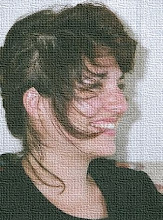
KikoRomeo peace patches with jewelry by Le Collane di Betta

KikoRomeo mens by Joseph Hunwick
*Can you tell us a little about your work , the idea and the philosophy behind it.
I came to Kenya for 3 months out from the fashion scene in Barcelona. I found I liked it & so stayed 3 years as head of Mission for MSF. At the end of that time I was frustrated by emergency aid and thought I could use my fashion skills to do trade instead of aid . I aimed to produce through community groups in rural Kenya, generating employment. The concept for a contemporary African clothing brand came from the lack of availability of Kenyan ready-made designer products and the lack of pride I saw in the local culture and anything African. So KikoRomeo, meaning Adam's Apple in swahili, was born to fill these gaps.

Kooroo cloak from recycled silk sari, photo by Joseph Hunwick for FAFA

Outfit by Kofi Ansah in traditional handwoven Kente cloth from Ghana, photo Joseph Hunwick

KikoRomeo Peace Patch dress

KikoRomeo Peace patch dress, photo by Joseph Hunwick for FAFA, jewelry Le Collane di Betta
*Why is there such a need for the fashion industry to think sustainably?
Fashion has an impact on the environment, in our case through the cotton industry which uses a lot of pesticides, and damaging fabric dyeing & treatments. Kenya is badly affected by climate change and so protection of our environment is key. As regards short term fashion trends, people wear & throw within no time, meaning a huge wastage of material & energy inputs. Such consumer habits can also adversely affect communities and businesses, which gear up to meet a demand, only to be dumped the next season. This means they can't plan long term, and are at the mercy of trends in the developed markets.

Outfit by Kofi Ansah - embroidered PVC and mudcloth, photo Joseph Hunwick for FAFA
*What is "now" in terms of materials, colors, techniques?
In East Africa, "now" usually means many different things, as people are not used to following a few trends, have few magazines to persuade them to buy a specific trend, and often go for individual looks. The only recent clear trend has been a big interest in the traditional "khanga" or "lesso". These are cotton fabrics which are printed in with a rectangular framed border, usually with big bright patterns in contrasting colours & with a slogan or proverb in Swahili. They are sold in pairs & traditionally were bought and kept by women to sell when they needed money.
Colours are very diverse, but definitely a big interest currently in golden yellow, turquoise, shocking pink and orange.

Jewelry and dress by Patricia Mbela, photo Joseph Hunwick
*Why do you think there such revival for everything ethical now?
I have been working in "ethical" for a long time, because I find humanitarian principles very important, and I hated big fashion's disregard for them. Having said that, I think the global economic crisis has made people re think how things are made, where they come from, and has led to an appreciation of small-scale, handcrafted, tangible, home-made etc.. The human stories behind the products are interesting, the big manufacturing model had become boring, impersonal & mechanical.

Coat by John Kaveke, Jewelry Kazuri Beads, Photo Joseph Hunwick

Imane Ayissi design, photo Joseph Hunwick
*Can you visualize 2010 in a color palette? a texture? a word or several
My year is always about colour - lots of it, in strong, bright contrasts. Having a diverse clientele with different skin colours, I think it's important to offer a wide choice.
My 2010 is a mix of new fabrics with recycled scraps & 2nd hand clothing. Stripes, bold East African prints, mixed with lacy knits crochet and beaded & hand embroidered applique patches. Layers, drapes and textures. Colours are orange, yellow, white, blues with beige & black and many more as the year unfolds. Coconut buttons. Inspired by the Swahili culture of the East African coast & particularly the island of Lamu.
My 2010 is a mix of new fabrics with recycled scraps & 2nd hand clothing. Stripes, bold East African prints, mixed with lacy knits crochet and beaded & hand embroidered applique patches. Layers, drapes and textures. Colours are orange, yellow, white, blues with beige & black and many more as the year unfolds. Coconut buttons. Inspired by the Swahili culture of the East African coast & particularly the island of Lamu.
*How has your work impacted the communities you work with?
We create supplementary income for many communities - particularly beaded leather from Namayiana Womens Group (100 Maasai women near Ngong), "Peace Patches" from Kibera A & B ( association of 20 young women living in Kibera slum), decorative metal tubes & buttons from KWOSH (association of women, youth and orphans in Kisumu), coconut buttons from Murage (community business in Mombasa) etc... We also connect them to other networks & businesses. We help them develop new designs, which in turn enables them to better interpret designs of other companies.
*How is your work sustainable?
We work with locally available materials & craft skills. We use our off cuts to make or decorate other products, so nothing gets wasted. We train staff both in house and in groups to make our designs.



+-+copia.jpg)







i love the dresses and the photo shoots thts really smart.
ReplyDeleteEnoch Naam
C.E.O
Kat Models
Wildcat Entertainment